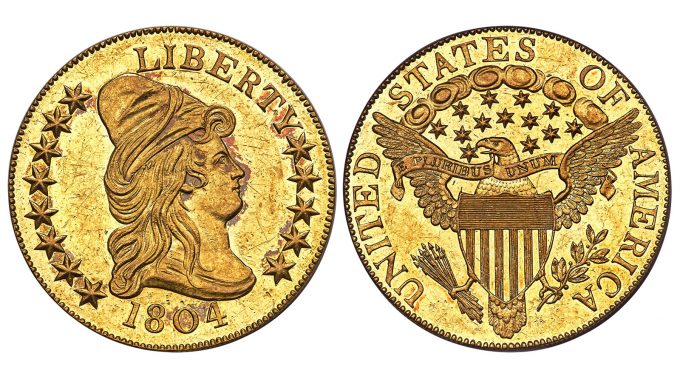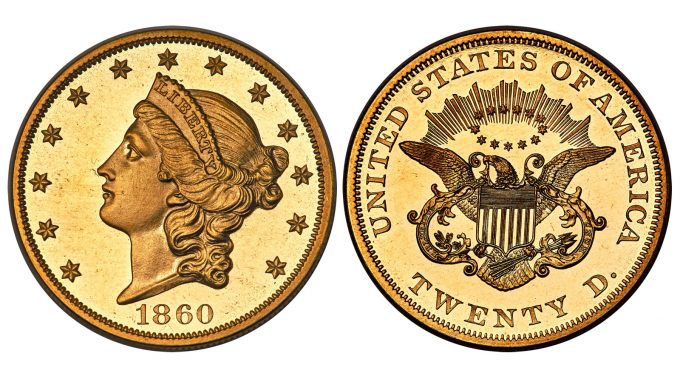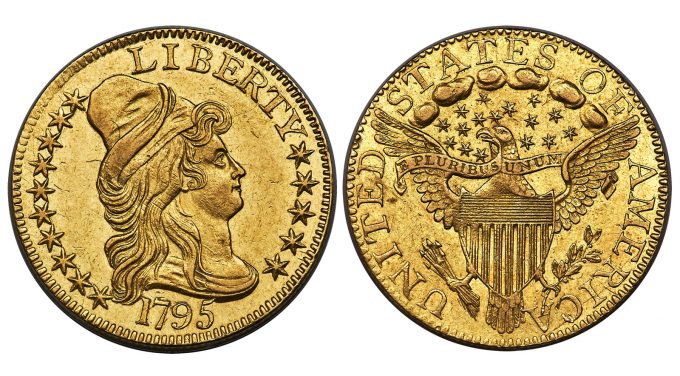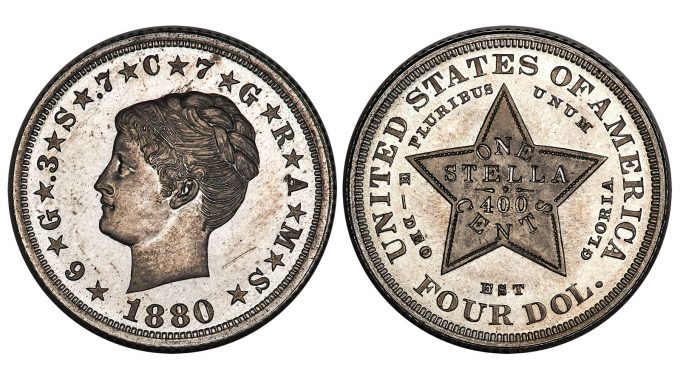After more than a half a century away from the public eye, one of the finest collections of U.S. gold coins and related patterns finally will be made available during Heritage Auctions’ Harry W. Bass Jr. Core Collection Part I US Coins Signature® Auction — Long Beach Sept. 29.

Heritage was announced July 13 as the auction destination for this magnificent assemblage, one of the most revered and valuable collections in numismatic history. The collection boasts an estimated value of more than $60 million, and proceeds from its sale will benefit the dozens of Dallas-based nonprofits supported by the Harry W. Bass Jr. Foundation with a particular emphasis on early childhood education and literacy in Dallas.

The collection, which the late Dallas oilman and philanthropist Harry W. Bass Jr. began assembling in the 1960s, has been on display at the American Numismatic Association’s Edward C. Rochette Money Museum in Colorado Springs, Colo., since October 2000. Earlier this year, the foundation’s trustees voted to sell the collection, which contains some 450 U.S. gold coins dating to the late 1700s, to increase its annual giving, from $2 million to at least $5 million each year, depending on the results of the auction.
"Much of this collection was assembled more than half a century ago," says Todd Imhof, Executive Vice President at Heritage Auctions, "and for years was thought to be out of the reach of the collecting community. "When the Bass Foundation announced it would be deaccessioning it to increase philanthropic efforts in our corporate hometown of Dallas, we felt compelled on a personal level to present an auction proposal that the Bass Foundation’s trustees would find very enticing and professional. Needless to say, we are thrilled to be awarded the honor of handling the sale of these fabulous coins."
The Bass Foundation’s board of trustees hired Professional Coin Grading Service (PCGS) co-founder and numismatics expert John Dannreuther to manage the collection’s sale, including selecting an auction house and third-party graders.

Many of the coins in the collection can be traced to the celebrated auction of Louis E. Eliasberg Sr.’s gold coin collection in 1982.

The auction will include more than 100 lots from the Bass Collection, a list that includes:
- An 1804 Capped Bust Right eagle, PR63 PCGS, the extremely rare Plain 4 variety, BD-2, JD-1, High R.7. Ex: Woodin-Eliasberg, which Dannreuther called "one of the most spectacular gold rarities in the entire American series. The discovery coin for the issue, it first appeared in a photograph in the August 1869 edition of the American Journal of Numismatics – one of the earliest pictorial representations of any U.S. coinage – and has been a highlight of many famous collections, including those of Lorin G. Parmelee, William Woodin and Louis E. Eliasberg, Sr. before it was acquired by Bass.
- An 1860 Liberty double eagle, PR65+ Cameo PCGS. CAC. JD-1, Low R.7, which first surfaced in a B. Max Mehl sale in 1930, after most of the gold proof sets had been broken up. It is one of only seven examples traced of this rare early proof gold issue.
- An 1854 gold dollar, PR65 Deep Cameo PCGS. CAC. JD-1, unique – the only Type One Proof example – makes just its second appearance at auction. Bass purchased this coin in 1985 for $68,750, a remarkably high price at the time. It has been off the market ever since, but has been viewed by millions of collectors while on display at ANA Headquarters in Colorado Springs and at major coin conventions.
- A 1795 Large Eagle five dollar gold, AU58 PCGS. CAC. Rare BD-14 variety, High R.6 Vibrant surfaces – one of between 14 and 18 examples of which are believed to exist, making BD-14 the second-rarest die pair, with auction appearances often separated by multiple years.
- The only proof in private hands of an 1821 half eagle, PR65 Cameo PCGS. CAC. BD-1, JD-1, R.8 as a proof. The 1821 Capped Head Left half eagle is a notable rarity in the series, even in business-strike format; as a proof, it is prohibitively rare. The offered coin is one of just two known examples – the other is included in the National Numismatic Collection at the Smithsonian Institution
- An 1880 Coiled Hair stella, PR65 PCGS. Struck in aluminum. Judd-1682, R.8, Ex: Maris-Garrett, one of just four examples traced. Among the in-demand stellas of 1879 and 1880, the 1880 Coiled Hair, with just nine known examples, is particularly coveted. Four exist in aluminum (plus about a dozen in copper), and are about twice as rare as those struck in gold.
Other top lots include, but are not limited to:
- A 1797 Large Eagle, BD-3, R.5, AU58+ PCGS
- A 1909 Half Eagle PR67 PCGS. CAC
- An 1872 Three Dollar, MS65
- An 1872 25C Amazonian Quarter Dollar, Judd-1195, Pollock-1335, Low R.7, PR66+ Deep Cameo PCGS. CAC
- An 1879 Schoolgirl Dollar, Judd-1608, Pollock-1804, Low R.7, PR67 Cameo PCGS. CAC
Lot viewing for the Core Collection, Part I will be September 27 to 29 in Long Beach, and by appointment at Heritage Auctions’ Dallas headquarters.
Images and information about all lots in this auction can be found at HA.com/1353.
About Heritage Auctions
Heritage Auctions is the largest fine art and collectibles auction house founded in the United States, and the world’s largest collectibles auctioneer. Heritage maintains offices in New York, Dallas, Beverly Hills, Chicago, Palm Beach, London, Paris, Geneva, Brussels, Amsterdam and Hong Kong.
Heritage also enjoys the highest Online traffic and dollar volume of any auction house on earth (source: SimilarWeb and Hiscox Report). The Internet’s most popular auction-house website, HA.com, has more than 1,500,000 registered bidder-members and searchable free archives of five million past auction records with prices realized, descriptions and enlargeable photos. Reproduction rights routinely granted to media for photo credit.





